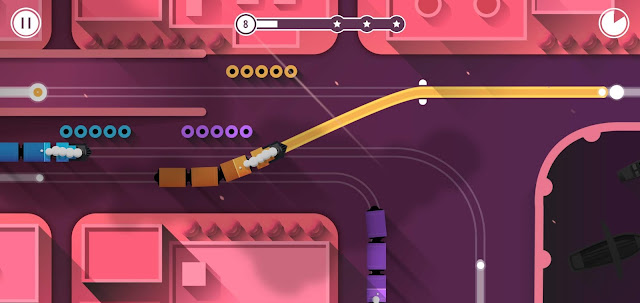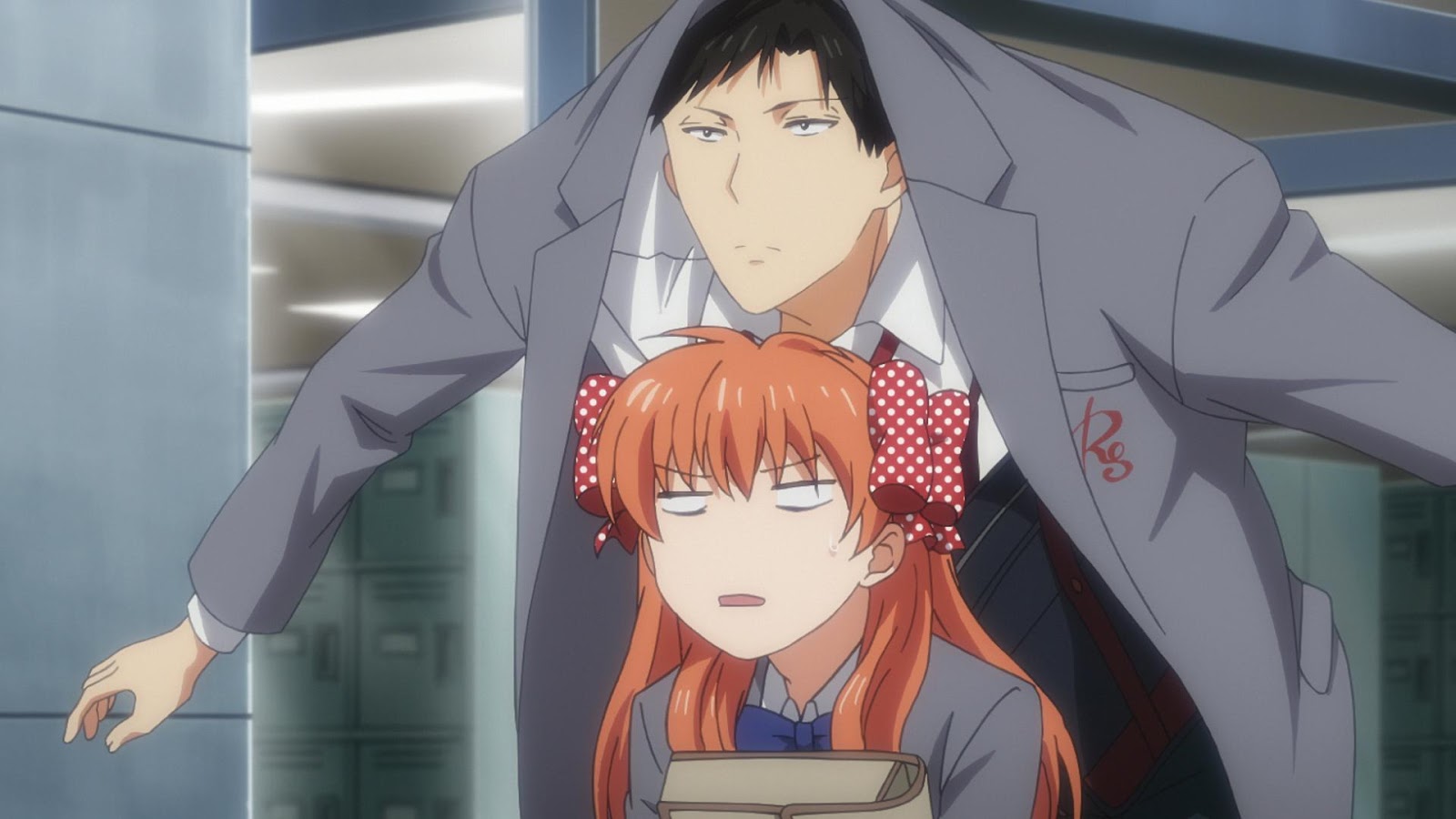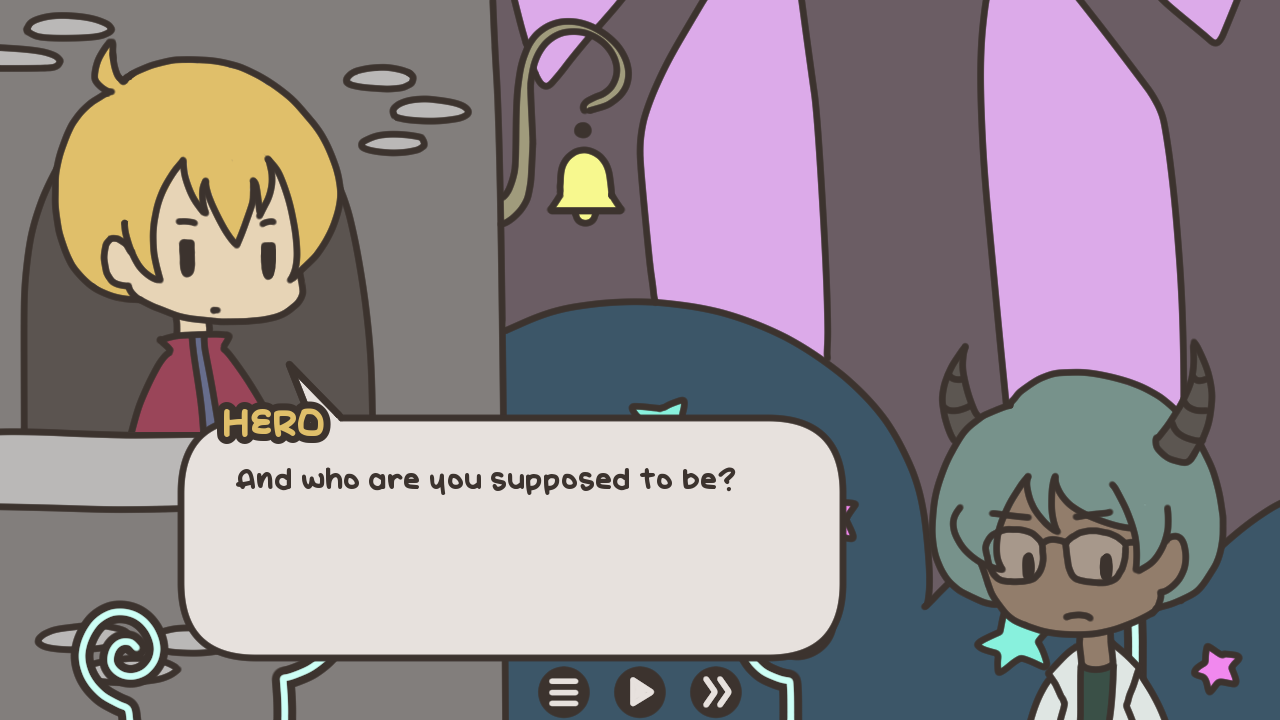Railways turns rerouting trains into a engrossing chaotic puzzle
Since it can be difficult to find time to finish video games, let alone find interesting ones that will provide a complete entertaining experience in a few hours. For this series I’ll talk about a short game that could easily be played to completion over a weekend.
I find Infinity Games’ Railways to be rather fascinating. It is both something of a sequel and something so different as to not be. While it shares a lot of visual similarities and theming with their previous game, to call it just Traffix with trains misses how where it deviates helps to produce an entirely different gameplay and problem solving experience.
Each level of Traffix puts you in control of an intersection or group of intersections and asks you to manually control the traffic signals until a specified number of white cars leaves the area. How you control the lights couldn’t be more simple. By default, all of the lights are set to red, stopping all cars and trucks. Tapping or clicking a traffic light once lets a single vehicle through, while tapping twice lets all vehicles through until you hit it again to change the light back to red.
In Railways you manage trains at a multi-track crossing, although there isn’t anything for the trains to use to change tracks and so unlike Traffix you aren’t controlling signals. Instead you control the trains themselves, and construct the paths they take to go from one track to another. Which you need to do in order to get to randomly placed cargo that matches the train’s color.
So if for instance there are three tracks running parallel horizontally and the blue train is on the top track, but there is blue cargo on the bottom track, you have to press on the blue train and draw a line from it to the bottom track. Letting go creates that connecting track, and the blue train moves along it to the bottom, and once it passes by the cargo it is automatically collected by the train. When trains reach the edge of the screen they loop back around on the track they are currently on, so if the blue train missed the cargo initially as long as it is on the right track it’ll eventually pass by it.
So if for instance there are three tracks running parallel horizontally and the blue train is on the top track, but there is blue cargo on the bottom track, you have to press on the blue train and draw a line from it to the bottom track. Letting go creates that connecting track, and the blue train moves along it to the bottom, and once it passes by the cargo it is automatically collected by the train. When trains reach the edge of the screen they loop back around on the track they are currently on, so if the blue train missed the cargo initially as long as it is on the right track it’ll eventually pass by it.
The rub is that while maneuvering a train between tracks you have to avoid hitting the other trains you have control over (which instantly ends the level), and also not running over the cargo (which just destroys it). Eventually you’ll also have to avoid cars or planes that pass over the tracks depending on the level, and later in the game it adds a black train that you have no control of. Luckily you can stop a train by tapping on it, this only holds it in place for a few seconds, but it is usually enough to avoid serious collisions or give you time to reroute a train or two.
The analogy I’d use for Traffix’s gameplay is that it was often plate spinning where you needed to find the correct rhythm of the traffic and when to turn on and off lights to efficiently manage a level. In Railways there are fewer things which are more predictable that you need to keep an eye on, but you have more power over how to control them. So even though what you need to be doing is constantly in flux based on where each train is and where the cargo it needs to get to is at a given moment, there isn’t really a rhythm to get into.
Despite the ever changing nature of its levels they aren’t actually that stressful. This is thanks to the only requirement to finishing a level being that you survive for a certain amount of time without crashing. Making a level’s solution more akin to coming up with a set of best practices for how to last until the timer runs out. However you can also end a level by collecting a certain amount of cargo, which is essentially each level’s hard mode as the solution requires not only a set of best practices for maneuvering the trains in a level, but also the ability to quickly make decisions and execute on them.
Railways manages to be both more demanding than Traffix if you want to play efficiently, but also less demanding if you are just trying to finish levels. It scratches a gameplay itch I don’t think I’ve had since Wilmot’s Warehouse where you need to quickly plan and execute on the fly to do well, but when you mess up it is because you weren’t paying enough attention. Which motivates you to want to jump back in and do better when you mess up instead of walking away from it.




